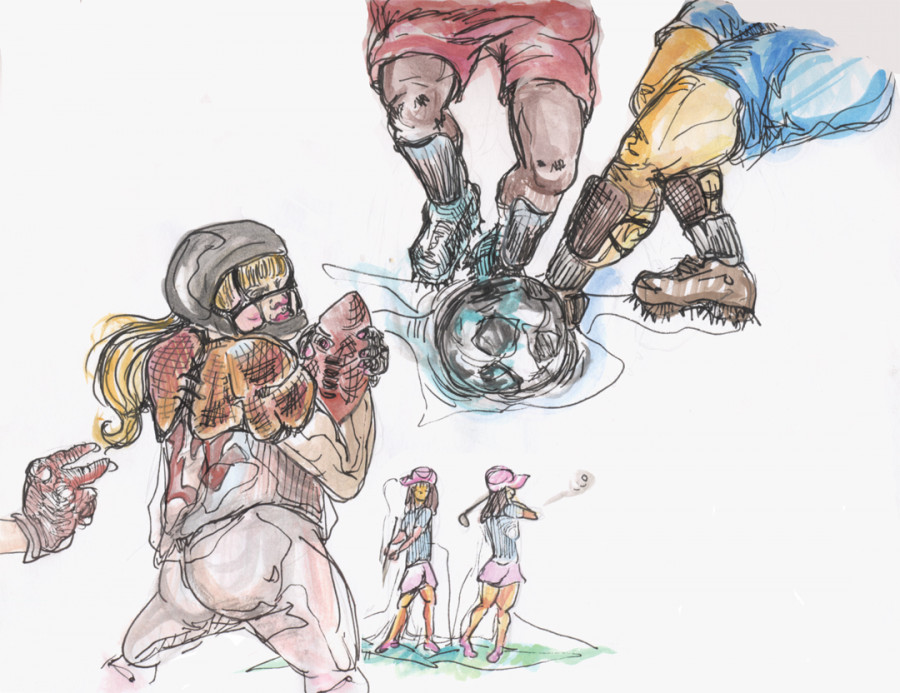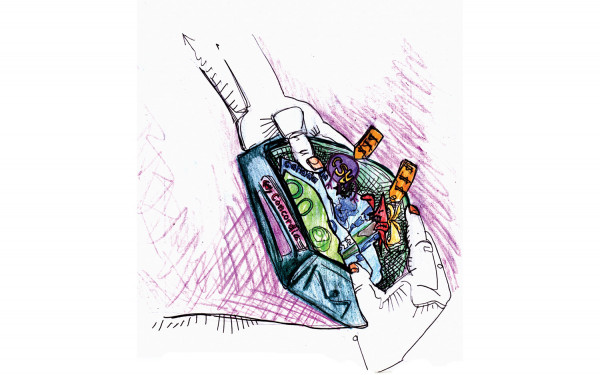Editorial: We Need to Invest Money and Time Into Women’s Sports
So, 2015 has proven to be a big year for women in sports.
Talented female athletes in the mainstream, from UFC fighters Ronda Rousey and Holly Holm, tennis superstar Serena Williams and both the Canadian and United States national women’s soccer teams are having their day in the sun as the dominant and entertaining athletes they’ve always been.
Closer to home, the Concordia Stingers women’s teams are doing their part to stand out, and no one shines brighter than perhaps the women’s rugby team. They’ve made regular appearances in the Réseau de Sport Étudiant du Québec conference final and the Canadian Interuniversity Sports National Championships. They also boast the last two conference MVPs—Alexandra Tessier and Frédérique Rajotte.
Despite this success, we still have some way to go before women’s teams outside of the collegiate level are at even keel with their male counterparts, especially when it comes to support, coverage and opportunity. Male athletes, if talented enough, have ample shots at continuing their post-graduation careers in professional leagues domestically or abroad. Female players do as well, but prospective professional opportunities aren’t nearly as lucrative or popular.
When sports fans visit mainstream sports sites such as TSN, ESPN or Sky Sports, male athletics dominate the headlines. Even on their TV networks, female athletes aren’t shown as frequently as their counterparts. Unless it’s the FIFA World Cup, the Olympics or a major tennis tournament, women are often overlooked.
In a report released by Women In Sport in 2014 called “Women’s Sport: Say Yes to Success” it was revealed that only seven per cent of media coverage went exclusively to women’s sports.
While a major issue, media coverage, however, is not the only problem. It has been well documented that women make significantly less in terms of salary compared to men. While they can live off their talent, many female athletes must take on other jobs to support themselves.
Hockey players who desire to continue their careers after university have opportunities in the National Women’s Hockey League and Canadian Women’s Hockey League, but won’t make much. In the NWHL, forward Kelli Stack of the Connecticut Whale is the league’s highest paid player, making $25,000 this season. Entire teams’ total salaries are approximately $200,000. It’s still a better alternative to the CWHL, whose players are unpaid.
Sponsorships sustain sports. In Stats Pack for Media, Women In Sports released information—from September 2011 to December 2013—stating that women’s sport sponsorship deals accounted for less than six per cent of the total number of sponsorship deals recorded.
With the aforementioned stats, it’s easy to see why leagues and teams aren’t willing to invest in women’s sports because there aren’t any sponsors. The latter are hesitant to invest because there’s barely any coverage, and the media have no incentive to cover the leagues without major sponsorships, or sponsored athletes that will bring in ratings.
This cycle is the reason why the W-League, a professional women’s soccer league in North America, is ceasing operation in 2016.
What kind of future does that present to potential professional athletes, whether from the Concordia Stingers or elsewhere?
It’s easy to tell everyone they should make more of an effort to watch women’s sports. While we all should, more effort is needed.
Money has to be invested in women’s programs across the board in order to see growth. The Concordia Stingers have invested thousands into their women’s programs, such as rugby. The team’s recruitment budget is almost four times more than the men’s squad. Concordia’s women’s basketball team also boasts a slightly larger recruitment budget than their male counterparts.
It’s only one way in which teams are funded, but it’s still an indicator that Concordia isn’t leaving their women’s teams by the wayside.
The National Women’s Soccer League in America has also seen some growth because they’ve attracted the best female soccer players in the world—thanks in large part to Major League Soccer teams investing in women’s teams.
Even Major League Baseball legend Pedro Martinez, during the launch of a girls baseball program, the BASE, in the United States, “wouldn’t doubt” the possibility of female players eventually joining MLB.
There is some investment into women’s sports, but there is still a long way to go before full-time female athletes can become a reality.


_600_832_s.png)


